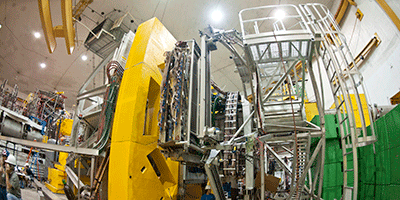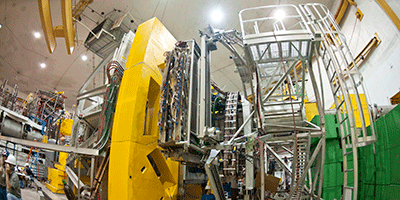The Weaker Side of the Proton
In the same way that electric charge determines a particle’s response to an electromagnetic force, the so-called “weak charge” characterizes the weak force’s effect on a particle. Weak charges are hard to measure because the force is relatively small. Now the Collaboration has for the first time teased out the proton’s weak charge, as reported in Physical Review Letters. The measurement, based on just of their available data, agrees well with theoretical predictions. However, further analysis may potentially uncover a discrepancy that would be evidence of new physics.
The weak force plays a prominent role in nuclear decays, but in order to measure the weak charge, researchers need a reaction where the weak force can be compared to another known force. Typically, the method of choice is to scatter electrons off a target atom or nucleus. Most of the force on the electron is electromagnetic, but a small contribution (around one part in a million) is provided by the weak force. By measuring the ratio of weak to electromagnetic contributions, previous experiments have obtained the weak charge of the cesium nucleus and the electron.
The Collaboration (D. Androic et al.) has now measured the proton’s weak charge using a spin-polarized electron beam at the Thomas Jefferson National Accelerator Facility in Virginia. In the experiment, the beam targeted a small vessel of liquid hydrogen, whose protons scattered the electrons into eight symmetrically placed detectors. To identify the contribution from the weak force, the researchers looked for a difference in the number of events as they altered the electron spin polarization. Such a difference is expected because the weak interaction, unlike the other fundamental forces, violates parity (or mirror) symmetry. The nature of this parity violation is such that a “right-handed” electron, whose spin aligns with its direction of motion, will be less likely to scatter off the target protons than a “left-handed” electron, for which spin and momentum are antialigned.
The Collaboration measured parity violation at a level of parts per billion, which implies the proton’s weak charge is in dimensionless units, agreeing with predictions based on the standard model of particle physics. As the analysis continues and the experimental uncertainties decrease, small contributions to the weak charge from exotic physics—such as supersymmetry—may potentially be observed. – Michael Schirber





